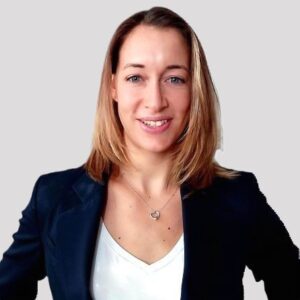Investing can feel like a complex endeavour, especially with a seemingly endless amount of investment strategies out there. Amongst the noise, one method worth understanding, whatever assets classes you are attracted to, is pound cost averaging.
This method involves regularly investing a set amount of money, irrespective of market conditions. By taking this steady approach, investors can often reduce their average cost per unit and manage market volatility more effectively.
In this article, we’ll break down what pound cost averaging is, how it works, how it compares to other investment strategies, and discuss why it could be a valuable approach for long-term investors.
What is Pound Cost Averaging?
Pound cost averaging (also called cost average investing and drip-feed investing) involves consistently investing a fixed amount of money into chosen assets at regular intervals, such as monthly or quarterly.
The idea is simple yet effective: by committing to regular investments, you automatically buy more units when prices are low and fewer when prices are high, potentially reducing your overall cost per unit over time.
Pound cost averaging is more about commitment and consistency rather than market timing. Instead of focusing on when to invest, this investment strategy encourages a disciplined, long-term approach that may help smooth out price fluctuations over time.
How Pound Cost Averaging Works
To see how pound cost averaging works in practice, let’s examine a hypothetical example.
Imagine you decide to invest £200 per month in shares of a particular stock over six months. The price of the stock varies each month, affecting the number of shares you can purchase with your regular investment.
Below is a table illustrating this concept:
| Month | Share Price (£) | Amount Invested (£) | Shares Bought | Total Shares | Avg. Cost per Share (£) |
| January | 20 | £200 | 10 | 10 | 20 |
| February | 15 | £200 | 13.33 | 23.33 | 17.14 |
| March | 25 | £200 | 8 | 31.33 | 19.10 |
| April | 18 | £200 | 11.11 | 42.44 | 18.85 |
| May | 22 | £200 | 9.09 | 51.53 | 19.43 |
| June | 17 | £200 | 11.76 | 63.29 | 18.94 |
Over these six months, you’ve invested a total of £1,200 and acquired 63.29 shares. The price per share varied each month, but by consistently investing a set amount, you achieve an average cost per share of £18.94, which is lower than the highest share price of £25.
In this example, pound cost averaging not only simplifies the process of investing but also helps manage the impact of market ups and downs, creating a more predictable approach to building an investment portfolio.
Pound Cost Averaging vs Lump-Sum Investing
Pound cost averaging and lump-sum investing are two distinct approaches that cater to different investment styles and risk appetites. While both strategies aim to grow wealth over time, their methods and potential outcomes can vary significantly.
Pound cost averaging involves investing a fixed amount at regular intervals, helping to reduce volatility by spreading purchases over time. It mitigates the risk of investing a lump sum at an unfavourable moment, as you buy more shares when prices are low and fewer when they’re high, potentially lowering your average cost per share. For instance, investing £200 monthly might mean buying shares at £15 one month and £25 the next, averaging out the cost.
In contrast, lump-sum investing involves putting a substantial amount into the market all at once. This strategy can be highly rewarding in a rising market, as the entire investment is exposed to potential gains from the start. However, it also involves greater risk, as a sudden downturn could immediately affect the entire sum. For instance, if you invest £10,000 at once and the market declines by 10%, you would face a significant drop in value right away.
As you can see, pound cost averaging offers a more conservative and steady approach, ideal for those who prefer reduced risk and consistent investing.
Lump-sum investing, however, may provide higher returns in a rising market but requires a higher risk tolerance and confidence in timing.
Each strategy has its strengths, so the choice depends on the investor’s goals, market outlook, and comfort with risk.
Pound Cost Averaging vs Value Averaging
Value averaging is another strategy where investors adjust their contributions based on market performance. Unlike pound cost averaging, which involves a fixed amount invested at regular intervals, value averaging requires the investor to set a target growth rate and adjust the investment amount to meet that goal. If the investment grows more than expected, you invest less in the following period; if it grows less, you invest more.
This strategy can result in better returns during market volatility as it capitalises on buying more assets when prices are lower. However, it requires a more hands-on approach and frequent adjustments, which may not be suitable for all investors.
For example, if you aim to increase your investment by £200 each month, but your assets underperform and only grow by £100, you’d need to add an extra £100 in that period. Conversely, if they grow by £300, you might not need to invest at all during that interval.
Overall, value averaging can be a compelling strategy for investors who are comfortable with a more active approach and the need for regular adjustments. It offers the potential for higher returns, especially in volatile markets, by taking advantage of lower prices during downturns.
However, its complexity and the time commitment required may not suit every investor, particularly those who prefer a more straightforward and consistent investing method like pound cost averaging.
Benefits of Pound Cost Averaging
Pound cost averaging offers several benefits that make it a popular choice for investors seeking a disciplined, long-term strategy.
By investing a fixed amount at regular intervals, this approach can help manage the impacts of market volatility and reduce the risks associated with trying to time the market.
Here’s how pound cost averaging can benefit investors:
- Reduced Impact of Market Volatility: By spreading investments over time, you naturally buy more shares when prices are low and fewer when prices are high. This helps average out the cost of each share, reducing the effect of market fluctuations on your portfolio.
- Lower Average Cost Per Share: Pound cost averaging allows you to accumulate shares at varying prices, which can result in a lower average cost per share over time. This is especially beneficial during periods of market downturns, where your fixed investment buys more units at lower prices.
- Minimised Emotional Stress: Since pound cost averaging follows a consistent investment schedule, it eliminates the pressure of trying to time the market. This can reduce the anxiety associated with investing, as you’re less likely to worry about entering the market at a peak.
- Encourages Discipline and Long-Term Focus: With a set investment plan in place, you’re more likely to stick to a regular schedule, fostering a disciplined approach. Over time, this can help you build a substantial portfolio without needing to monitor market movements constantly.
- Flexibility and Accessibility: Pound cost averaging works well for investors with limited funds, as it doesn’t require a large lump sum to get started. It also suits various asset types, from stocks and bonds to mutual funds, making it more accessible for a wide range of investors.
Overall, pound cost averaging can be an effective way to manage risk, promote steady growth, and reduce the emotional impact of market fluctuations, making it a viable strategy for those committed to long-term investing.
Potential Drawbacks of Pound Cost Averaging
While pound cost averaging can provide stability and reduce risk, it also has limitations that may impact returns, particularly in certain market conditions.
Understanding these potential drawbacks can help investors determine if this strategy aligns with their investment goals:
- Investors May Miss Out on Higher Returns: In a consistently rising market, investing a lump sum might lead to better returns, as all funds are exposed to growth immediately. By spreading investments over time, pound cost averaging could underperform if prices keep increasing steadily.
- Longer Recovery Time During Downturns: Since you’re investing incrementally, it can take longer to recover losses during prolonged market downturns. Unlike lump-sum investing, where all funds benefit from a rebound, pound cost averaging only gradually reaps the benefits of recovery.
- Lacks Market Timing Flexibility: This strategy follows a fixed schedule, which means you can’t capitalise on short-term market opportunities. If prices drop significantly, you may still be locked into smaller, scheduled investments rather than having the flexibility to invest more at lower prices.
- Possible Higher Transaction Costs: Frequent investments can lead to additional transaction fees, especially if you’re investing in assets with per-trade charges. Over time, these costs can add up and reduce overall returns.
- Reduced Impact During Steady Market Growth: Pound cost averaging is most effective in volatile markets, but in steadily growing markets, it may offer limited benefits. By investing regularly, you avoid big losses but may also miss the benefits of compounding on a larger sum invested earlier.
While pound cost averaging can mitigate risk, these potential drawbacks highlight the importance of assessing market conditions and individual investment goals before adopting this strategy.
It’s particularly useful for those seeking a long-term, gradual approach, but may not be ideal for investors looking to maximise returns quickly in a rising market.
The Value of Money Over Time in the UK
Understanding the value of money over time is essential for UK investors, particularly when it comes to inflation, currency fluctuations, and the importance of pound pricing in making sound investment decisions.
Inflation and Its Impact on Investments
Inflation refers to the rate at which the general price level of goods and services rises, reducing the purchasing power of money over time. For investors, this means that the real value of their returns can be eroded if their investments don’t grow at a rate that exceeds inflation.
Pound cost averaging can offer some protection against inflation by regularly investing in assets that may outpace inflation rates, such as equities.
For example, if you invested £1,000 today and inflation was 2% per annum, in ten years, your money would only be worth about £820 in today’s terms. However, by investing regularly through pound cost averaging, you continuously add to your investments, which may have the potential to grow and counteract inflation’s effects.
Mitigating Currency Risks
For investors, pound cost averaging can also provide a buffer against currency fluctuations.
For example, if you invest in international markets, exchange rates may fluctuate. Regularly converting pounds into another currency can average out the cost over time, potentially mitigating the risk of poor exchange rates.
Conclusion
Pound cost averaging is a strategy that can offer investors a disciplined approach to navigating market fluctuations. By spreading investments over time, you reduce the likelihood of buying at a market peak, while potentially lowering your average cost per share.
While no investment approach is without risks, pound cost averaging provides a straightforward and systematic path to building wealth over the long term. This strategy may be particularly suited to those who seek a structured, low-stress approach to investing without the need to monitor markets daily.
As with any investment decision, considering your individual financial goals and risk tolerance is key. Pound cost averaging could serve as a useful method for achieving steady growth in a manageable, consistent way.
If you’re interested in exploring how pound cost averaging or other strategies could fit into your personal financial plan, our team at MHG Wealth Management is here to help with it’s certified financial advisors.
With a commitment to personalised financial planning tailored to your specific goals, we offer a range of services designed to guide you on your investment journey.
Connect with us today for a consultation, and take the first step towards a secure financial future with expert advice you can trust.






